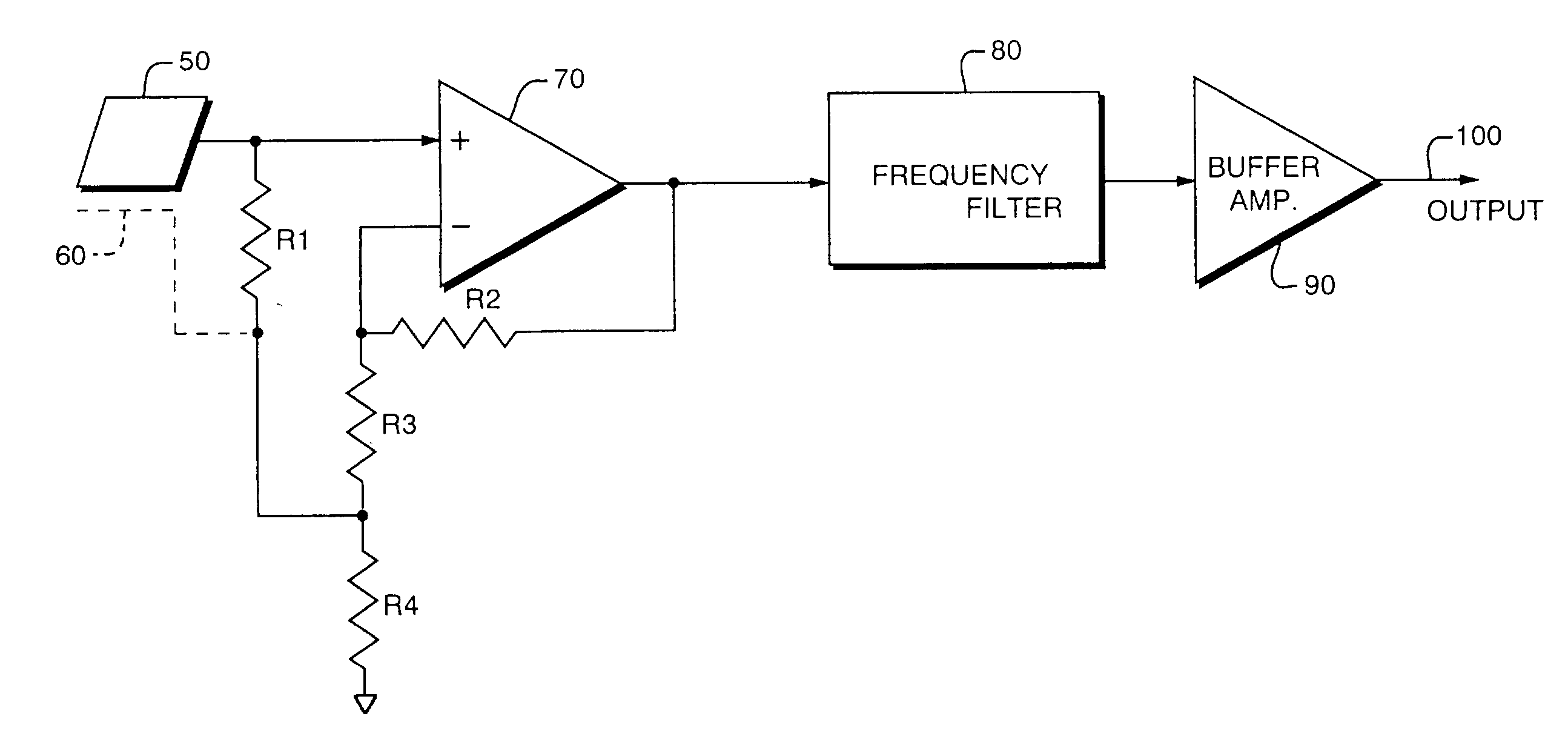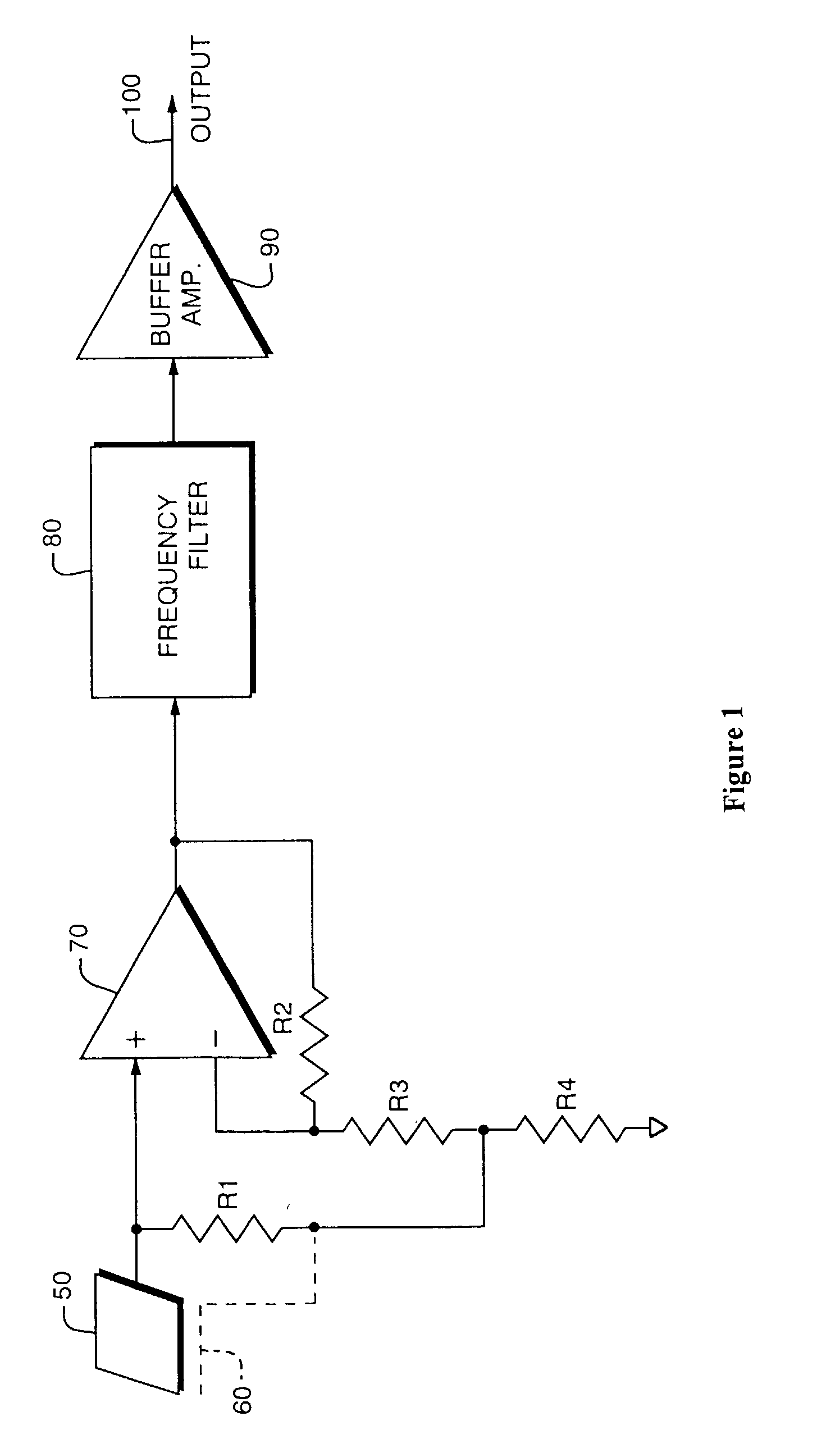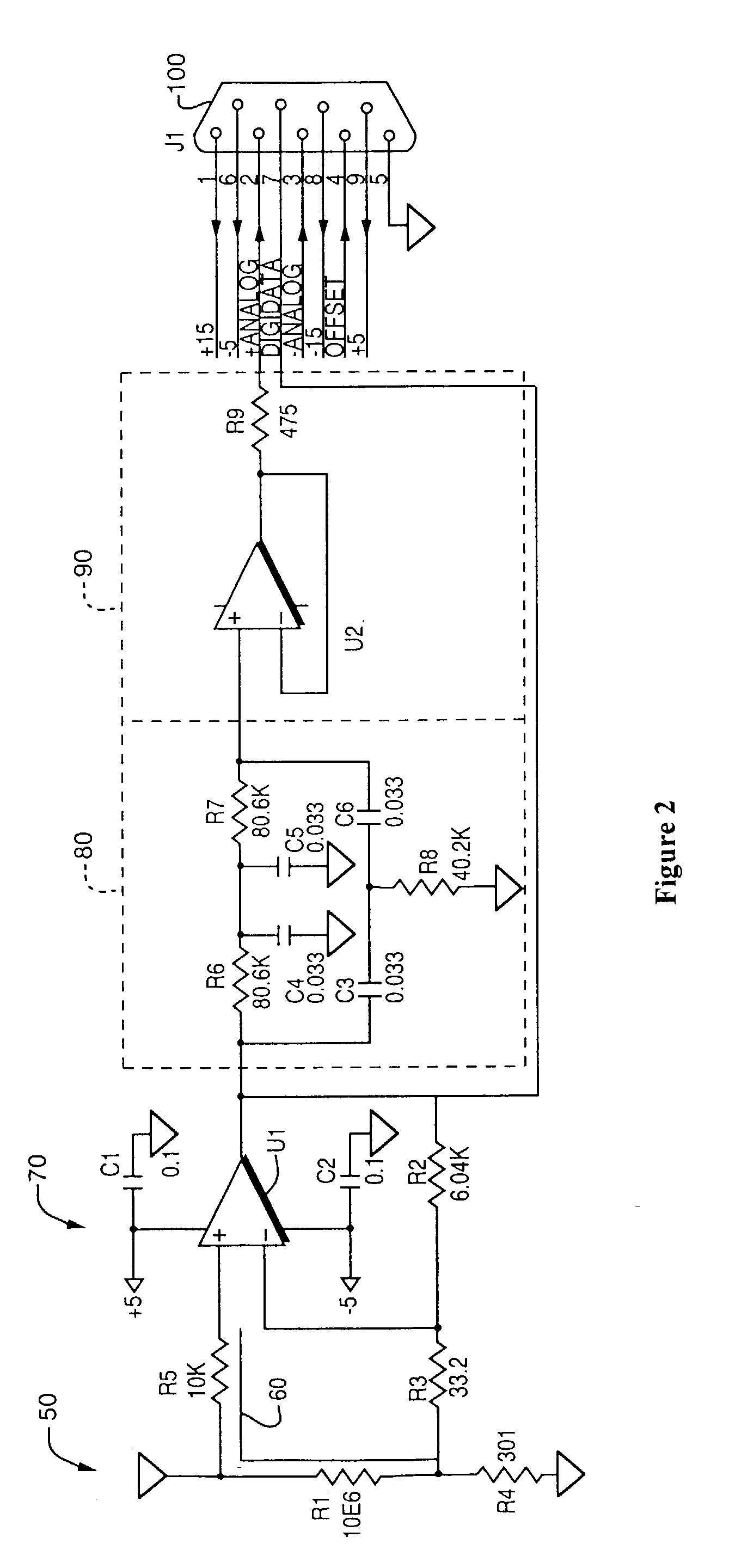Electric field sensor
- Summary
- Abstract
- Description
- Claims
- Application Information
AI Technical Summary
Benefits of technology
Problems solved by technology
Method used
Image
Examples
Embodiment Construction
[0053] To those skilled in the art, the invention admits of many variations. The following is a description of a preferred embodiment, offered as illustrative of the invention but not restrictive of the scope of the invention. Electro static event (ESE) sensors and systems according to the present invention exploit unintended and unavoidable electrostatic emissions in the spectrum from sub 1 Hz to greater than 1 MHz. The sensors are passive, low cost, small, low power and examine unintended or unavoidable emissions.
[0054]FIG. 1 is a block diagram representing a simple embodiment of the present invention sensor for detecting E-field distortions illustrating the circuit arrangement as well as the interconnection of the inputs and outputs. The sensing area 50 or “antenna” is generally a small receptive element, and in a preferred embodiment the sensing area 50 is a printed wiring board (PWB) etch or pad although it could also be an external sphere or other receptive unit.
[0055] The s...
PUM
 Login to View More
Login to View More Abstract
Description
Claims
Application Information
 Login to View More
Login to View More - R&D
- Intellectual Property
- Life Sciences
- Materials
- Tech Scout
- Unparalleled Data Quality
- Higher Quality Content
- 60% Fewer Hallucinations
Browse by: Latest US Patents, China's latest patents, Technical Efficacy Thesaurus, Application Domain, Technology Topic, Popular Technical Reports.
© 2025 PatSnap. All rights reserved.Legal|Privacy policy|Modern Slavery Act Transparency Statement|Sitemap|About US| Contact US: help@patsnap.com



